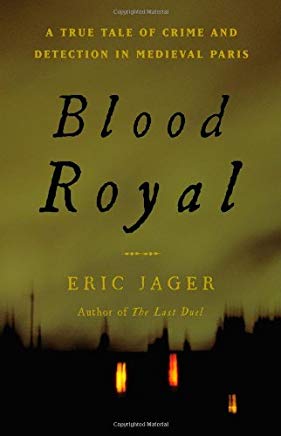On a bitterly cold night in November 1407, a group of men lay in wait along the Rue Vielle du Temple. The street is in the Marais which today is one of the toniest areas of Paris. The men had spent days building their cover story and tracking their quarry. Around 8 pm, Louis of Orleans rode down the street accompanied by several squires.
The assassins crowded round Louis’ entourage as their leader bellowed, “kill him!” As many as a dozen men attacked. They were armed with swords, knives, bow and arrow, and axes. Louis was knocked to the pavement and in less than ten minutes, he was dead, hacked to pieces with his skull split from crown to jaw. One of his squires lay dead beside him. The assassins fled to the scene of the crime. By the next day, they had slipped out of Paris.
Who killed Louis of Orleans? Too many people in Paris had a darned good reason for offing Louis, starting with his brother, King Charles VI. Charles suffered from mental illness which frequently incapacitated him. When incapacitated, Charles often accused Louis of trying to kill him. The bouts lasted from a few months to as long as a year. His wife and royal councilors referred to these periods as the “absence” of the king.
In a lucid moment, Charles appointed Louis as his representative to handle state matters during his absences. This arrangement annoyed their royal uncles who thought that Louis was rotten. Louis used the state treasury as his personal piggy bank. In the weeks before his murder, Louis had angered the royal councilors by demanding that they authorize a second tax in less than a year so he could pay his debts.
Despite vast estates, Louis was always broke. He spent a fortune on jewelry to seduce the wives of aristocrats. On one occasion he invited an unsuspecting knight into a bedchamber where a naked woman lay on the bed, her face hidden by a veil. Louis asked the knight to comment on the lady’s physical attributes. Only later did the knight realize that woman was his wife who had been seduced by Louis. Any of these cuckolded husbands could have plotted to kill Louis for humiliating them.
Another group of suspects involved political enemies who were vying with Louis for control of the mad king and the king’s heir, the dauphin. Among this crowd was Louis’ cousin, John of Burgundy, who was a royal councilor. John owned much of modern northern France and half of Belgium. He was the wealthiest aristocrat in France, after Louis. John’s wife was rumored to have been another of Louis’ conquests.
Into this sticky mess stepped Guillaume of Tignonville, the provost of Paris. The provost was the top cop in Paris, responsible for enforcing the law, investigating crimes, carrying out executions, and running the city’s prisons. The royal councilors instructed Guillaume to investigate the murder and report back to them.
Like a medieval Sherlock Holmes, Guillaume visited the scene of the crime and talked to the residents in the area. From these witnesses, Guillaume learned where the assassins hid before the attack and tracked down their landlord who identified a couple of the conspirators. The witnesses also told him which direction the murderers ran after killing Louis. He tracked the assassins through neighboring streets, locating more shopkeepers who had heard or seen the fleeing murderers.
Guillaume kept a detailed report of the statements he gathered from each witness. His account shows that he was a conscientious man who weighed the credibility of each witness. In a remarkably short time, Guillaume had traced the assassins across Paris and learned how they escaped the city.
Of course, what Guillaume really needed was the person who had hired the assassins. I won’t spoil the surprise by revealing the mastermind of the plot. The account of how the mastermind was tricked into revealing his guilt is worthy of Lt. Columbo.
Want to receive this blog straight to your inbox? Sign up for my mailing list.
Guillaume’s criminal investigation is detailed in Blood Royal, by Eric Jager (2014) along with the aftermath. His report was discovered centuries after he compiled it and served as the basis for Jager’s book. Visitors to Paris can see the spot where Louis of Orleans was bludgeoned to death.




